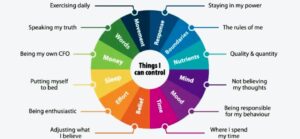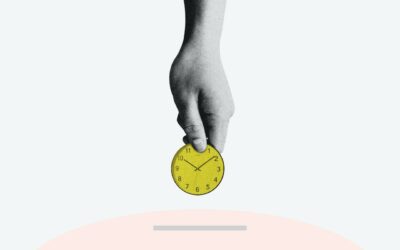As I was making coffee last Monday morning I absolutely could not remember if it was Sunday or Monday. I stood there watching the coffee dribble into the pot totally stumped. I had to pull out my phone to get reoriented, just like tapping the recenter icon in the Maps app. We all seem to be in a Ground Hog day existence, with each day merging into the next and with little, if anything, to look forward to. Many of us are chained to our computers, day after day, in a sort of Zoom hell.
And then there is the even bigger problem of nothing to look forward to. I met with my dear friend and colleague Ann Masten outside at a park, and here she was, one of the world’s foremost experts on resilience, revealing her own struggles with “nothing to look forward to.” I know from week after week of personal experience just how true this is.
The impending winter months that will strip away our outside social gatherings and outdoor restaurant dining will only create further isolation from other human beings. And despite Zoom being such a stunning business and communication savior for this Covid induced mess, it is still like social connection pornography – it just ain’t the real thing. It all adds up to a pretty solid formula for the potential creation of a rather somber depressed state.
Of course, many of us are so fortunate to be healthy, to have good food to eat, and to have our families and enough financial resources or a job to weather this mess. The active practice of gratitude for such good fortune is an essential part of the resilience toolkit to help weather the Covid clouds and rain. But despite such good fortune, humans are still driven by 1) the need for meaning and things to look forward to, orchestrated by the brain molecule dopamine (as I outlined in a previous blog post) and 2) by the need for social interaction and connection, driven by what Daniel Lieberman calls the Here and Now brain reward molecules in his fantastic book The Molecule of More.
So today I am writing with my perspective on the future of Covid-19 and about a few specific strategies that will help us weather the upcoming winter weather until we get to the other side of Covid-19.
I believe that come April or May (or sooner perhaps) we will break through the clouds hanging over us, much like a plane breaks through the turbulence and clouds in its ascent, and into the sunshine of the start of our recovery from this human nightmare. Why?
First are the strong signs of herd immunity that are starting to show up. As more and more humans get infected, whether they have symptoms or not, the risk of spread goes down because more and more of our human herd is no longer spreading the virus. So the risk of infection goes down. Check out these articles from New Scientist and the New York Times.
Second, come spring (or perhaps sooner despite the recent concerns with one vaccine) there will likely be multiple capable vaccines available which will help put the lid on this mess. To get a sense of the number of vaccines and their current developmental status, check out this Covid-19 vaccine tracker.
Third, it appears that, at least in Europe, the virus is less deadly than before. Why is unknown, but the reasons could include viral mutations, a greater proportion of young people being infected, and more effective medical management.
So there it seems that there is cause for optimism, despite the real challenges ahead, especially if we focus our time line to early spring for us to break through the clouds and into the sunshine.
But this still leaves the fall and winter months ahead of us with short days, cold weather (especially up here in Minnesota), and little if anything to look forward to. I have decided to lock my sights on the coming spring liberation and to buckle up for the long (but still relatively short) ride through the clouds of winter to get there.
For this flight over the next 6-7 months there are several powerful mental health management strategies we can pack in our bags for the trip, all based on the science of how our brain works and thrives.
Put Your Brain in First Class Shape
The first is to put your brain in first class shape by managing its metabolic health in the best way possible through good sleep hygiene, avoidance of sugar and processed foods, and exercise. These things matter, a lot.
For sleep, set a regular time to go to bed and avoid light of any kind for 1-2 hours before bedtime to help keep your circadian clocks in the right rhythm, and strive for 7-8 hours of sleep per night. If you do wake up, it is critical to strictly avoid any light (computer, phone, or TV, bedside lamp) so as not to mess up your circadian clock and rhythm which can end up disrupting your sleep several days later.
For diet, eat as many whole foods as possible, eat 2-3 hours before bed time, and avoid sugar, especially before going to sleep. Food, sugar, and alcohol near bed time are well known disruptors of sleep patterns.
The final key for brain metabolic health is exercise. Exercise causes the muscles to release a flood of molecules (called myokines) into the blood that act directly on the brain, and these molecules decrease stress, increase focus and memory, and dramatically increase brain cell connections.
You don’t have to run a marathon but you do need to move. Walking is a great exercise. My wife and I have been taking walks every morning and most nights which has had the added benefit of giving us time to talk and of creating more connection between us.
But movement is even more important now that so many of us are chained to the computer and Zoom every day. It is vital to get up and move, if possible, every hour or two.
Detaching from the computer screen and walking has an added significant benefit. When our eyes are focused in on anything up close, such as a phone or computer screen, it causes more norepinephrine (a stress hormone) to be secreted in the brain, which is necessary to increase our level of focus, vigilance, and alertness. But brain norepinephrine can also create a sense of anxiety, which is why being in front of a computer or phone for long periods makes us feel so agitated.
To counter this the neuroscientist Andrew Huberman recommends regularly shifting our vision to the horizon. To do this take a short break and look out into the distance, be it in the room you are in, or out a window, or better yet by being outside and looking at nature. Actively engaging in periods of horizon vision decreases brain norepinephrine levels which decreases the build up of subterranean low level anxiety and agitation.
So, if you are on Zoom for a lot of the day take a few minutes between sessions to get up, step outside (even if its cold), walk a bit, and do some active horizon gazing. And throw in a few deep breaths to further help yourself relax.
Accept, Totally, that You Are On a Long Flight, and Settle In
When we board a plane for a flight to the other side of the planet, most of us completely submit psychologically to the reality of being stuck in a metal tube in a chair for 12-24 hours. Complaining never helps the flight go more smoothly, for you or for your travel companions or the crew. Complaining and negative attitudes are like the pollution of our psychological air with the stench of sewage. We don’t have control over the flight, only how we respond to being stuck in the metal tube.
So the second strategy is to really get clear on what you do or do not have control over. This graphic from a talk by Lisa O’Neill (a self professed and now reformed control addict) gives a great template for really understanding the specific things we can actually control in our lives, especially in this time where we seem to have so little control. Think about each area and which ones you may need a little work in.
Knowing what you can control makes it clear what you cannot control, which is pretty much everything else. The question then becomes how to handle that which you cannot control so it doesn’t end up controlling you.
The key to unlock the door to mental freedom is acceptance. In the article Your ‘Surge Capacity’ Is Depleted — It’s Why You Feel Awful, Pauline Boss, a professor emeritus of social sciences at the University of Minnesota notes that we have all suffered a host of “ambiguous losses” which are loses that lack a clear resolution, all of which are out of our control. This is very hard for people in a solution oriented culture like ours, and it is very hard for a surgeon like myself, who thrives on solving problems.
Nine years ago when I was in treatment in Hazelden for my prescription narcotic addiction I learned about the concept of Radical Acceptance, popularized by Tara Brach which, as I noted in the Surge Capacity article, means totally accepting something, in your bones and entire being, without resistance.
It is the Pain x Resistance = Suffering formula again. Resist physical or emotional pain or external reality by complaining, feeling sorry for yourself, running a story loop in your mind about how awful things are, or doing things to try and get rid of, or avoid, pain or reality (think food, excess Netflix, alcohol, drugs) will only create suffering for you, and just as importantly, for people around you.
Instead, by truly accepting the pain or reality, without resistance, one can mentally relax, and it is in that state of relaxation where one can, with a clear mind, find opportunities to influence, but not control, the situation, and move forward in a positive way.
Simply stated, at a minimum, just don’t do anything that will make things worse, and remember what Sam Harris says – “wisdom is the ability to recognize the causes of suffering for yourself and others, and to avoid doing those things.”
Find Meaning in Smaller Things on the Journey, and Celebrate Successes
With so much of our future stripped away and so little to look forward to, our levels of brain dopamine have decreased, which makes us feel, well, shitty. Dopamine is the brian molecule of anticipation and the future. In days of yore it was what got us out hunting and foraging to survive. In modern times it’s what makes us pursue goals that have meaning to us (more detail in this recent post about my sorta skinny calves).
To get dopamine up (which by the way also counters the anxiety promoting effects of norepinephrine) we need to set goals, even small ones that have meaning to us, personally, and then work toward them. The incremental progress made toward achieving your goal boosts dopamine levels. But critically important is to celebrate the small wins along the way to your goal. Each mini celebration also boosts dopamine levels.
The formula is: Dopamine (goal desire) + Meaning (personal) + Small Win Celebrations = Enjoyable Pursuit of a Goal, which equals better mental health. Plug in your desire and what it means to you and get started, one small step at a time, one day at time, and celebrate along the way! It feels good, thanks to dopamine.
Even though it might seem dorky and self-absorbed to be celebrating your small wins, especially with all the misery everywhere, it is beneficial to your brain and your mood (and thus to other people in your orbit) to actually say, to yourself, “good job ……(fill in the blank) when you have accomplished something, no matter how big or small, that matters to you.
Some days there will be bigger wins, but even on other, totally shitty days, it may be as simple as congratulating yourself for just getting through the shitty day without making things worse. Just like writing 3 things in a gratitude journal in the morning boosts the Here and Now reward chemicals (see below), writing down 3 Things I Can Take Credit For in a journal every morning will boost brain dopamine levels.
Enjoy the Food, Company, a Book, or a Movie During the Flight
Although dopamine is the famous “gorilla” of brain reward molecules, as outlined by Daniel Lieberman, in The Molecule of More, there are 4 brain other brian reward molecules that help us feel good in the Here and Now that are just as important: serotonin, endorphins, endocannabinoids, and oxytocin.
These molecules are released when we do things that are right in front of us, literally within arms reach, like cuddling with a loved one, petting the dog or cat, writing in a gratitude journal, enjoying a good meal, meditation, reading a book, having a good conversation (even if it is on zoom) with someone close, or doing anything in nature. The key here, as with dopamine, is to be intentional about doing these things and to carve out dedicated time for them.
I cannot emphasize enough how important it is to be intentional and committed to making time for the Here and Now activities. The centrifugal force of outside commitments and the gravitational pull of the external world (think news, cell phones, facebook, instagram…..) can make spending time on the Here and Now activities seem unimportant or as if they can wait.
But they can’t wait. Andrew Huberman, the Stanford neuroscientist, notes that true high performers are able to intentionally toggle back and forth between the dopamine reward system and the Here and Now reward system. This ability to toggle was exemplified by Don Kennedy, the past president of Stanford University, and a family friend of Huberman’s.
Huberman notes that not only was Kennedy enormously successful but that he was also a great dad, an avid runner, and a really nice guy. Huberman asked Kennedy how does he did it all and his response was “you gotta work hard and at the end of the day you have to look at everything you have and you have to really enjoy it.” He toggled, intentionally, back and forth between dopamine and Here and Now.
But it gets even better! There is actually a way to get both sets of chemicals going at the same time, a sort of 2 for 1 deal. When we engage in creative activities that involve learning a new skill such as learning a language, playing an instrument, gardening, making pottery, building something, or writing this article, both the dopamine and the Here and Now reward systems are activated, simultaneously. The act of imaging, planning, and execution combined with the direct, in arm’s reach activities, harnesses the power of both reward systems.
This is exemplified by the project my son Mike and his wife Sarah took on to build a storage shed off the side of their garage, something they had wanted to do for some time. It involved planning and design, the process of getting the materials and equipment, and then building it together. They just finished putting the roofing on two days ago and they felt great. Mike remarked spontaneously to me how great building the shed had felt and how much he and Sarah had enjoyed the process, even though neither of them had ever built anything before.
The power that creative endeavors have to improve our mental health is astounding, and it is all about brain biology.
Our Destination
Our mission is to get to our destination – next spring – and into the sun with our mental and physical health intact, to the best of our ability. All military special forces, for complex missions that are exceedingly difficult, keep their eye on the big goal (walking out of the Covid jail in the spring), but focus relentlessly, day in and day out, on the small steps they need to take toward the bigger goal while constantly celebrating small wins.
The long flight to spring will take intention, commitment, and discipline, but once we land, it will have been worth the effort.





So appreciate your thoughts. Having just lost a treasured pet, I will definitely put to action these concepts. I am fortunate in that I do have something to look forward to in the near future, a wonderful new daughter-in-law! Not the celebration we originally planned, but a sweet, cherished moment none the less. Your words of support are powerful and much appreciated by this retired pediatrician.
Thank you Beth for your kind words. I wrote a bit back about our dog Jacques, and unfortunately we had to put our 10 year old German Shepherd Joker to sleep about one month ago. So hard……but as you write, still much to be grateful for in our lives. Really appreciate the note!
This is so very important and I can’t thank you enough!
Thanks so much Marjorie, so appreciated!